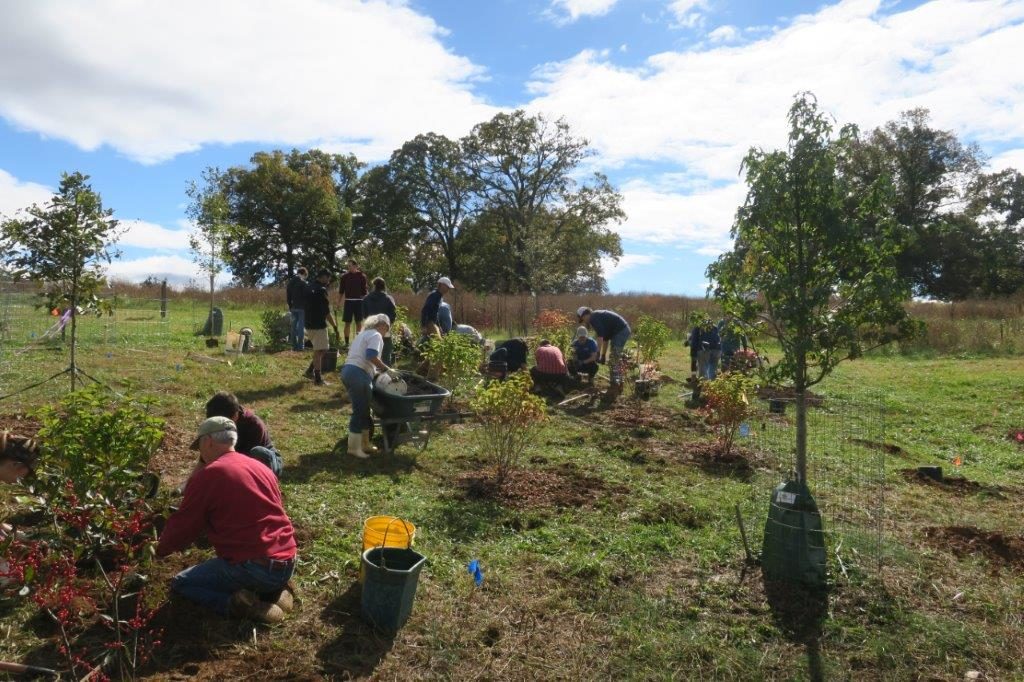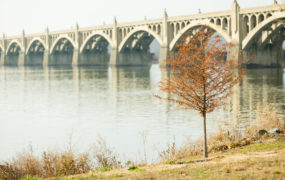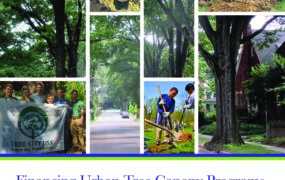The City of Charlottesville is pursuing an objective to maximize tree canopy at the neighborhood scale based on land use and density. A comprehensive Urban Forest Management Plan guides the City in this objective, and canopy assessments every five years measure progress. In between assessments, the City’s Urban Forester tracks tree plantings, removals, pruning, tree size, and species, and uses aerial photography to identify priority neighborhoods for future plantings. Charlottesville’s progress in protecting and maintaining its tree canopy is due in part to its Tree Conservation Ordinance, which protects special trees, as well as its active base of citizen champions who serve on the City’s Tree Commission and/or serve as Tree Stewards.
“By doing preventative tree work (pruning or removal) we can avoid costly damage in storm events. Many trees that would inconvenience our community by blocking roads, sidewalks or damage people or property in storm situations ideally can be mitigated before they happen.”
Mike Ronayne, City of Charlottesville, Virginia
Financing strategies

Charlottesville’s forestry program is funded through the City’s general operating budget and its capital improvement plan (CIP). A CIP is a short- to medium-term plan identifying capital projects and financial resources to fund those projects. The City’s staff, Tree Commission, and citizens advocated to incorporate urban forestry in to the CIP, asserting that trees are a community asset that requires improvement and maintenance. Charlottesville’s CIP earmarks consistent funding for proactive tree maintenance such as tree pruning, emerald ash borer treatments, Dutch elm disease treatments, and tree planting. It also supports planning. The City utilizes general operating funds for last-resort tree removal, unexpected storm damage, and other emergency needs. Occasionally, the City will supplement its tree budget with grants for smaller projects such as its five-year tree canopy studies or smaller tree plantings.
Take-away lessons
- Active and supportive citizens can be excellent advocates for adequately funding the local forestry program, helping to make the case that community priorities should be supported by tax dollars.
- Embedding tree maintenance and management into the local CIP is an effective method for consistently funding urban forestry needs; it also enables the community to strategically prioritize projects and funding resources.
- It is important to reserve funds (in the operating budget or elsewhere) for unexpected or emergency costs such as damage from storms.
Resources
Charlottesville Best Management Practices for Tree Preservation, Transplanting, and Removal
Charlottesville Capital Improvement Plan
Charlottesville Tree Conservation Ordinance
Charlottesville Urban Forest Management Plan
Charlottesville Urban Forestry Program
This case story is originally from the Financing Urban Tree Canopy Programs: Guidebook for Local Governments in the Chesapeake Bay Watershed. Check out the guidebook for more case stories, resources, and other useful information about sufficiently and sustainably funding urban forestry.





